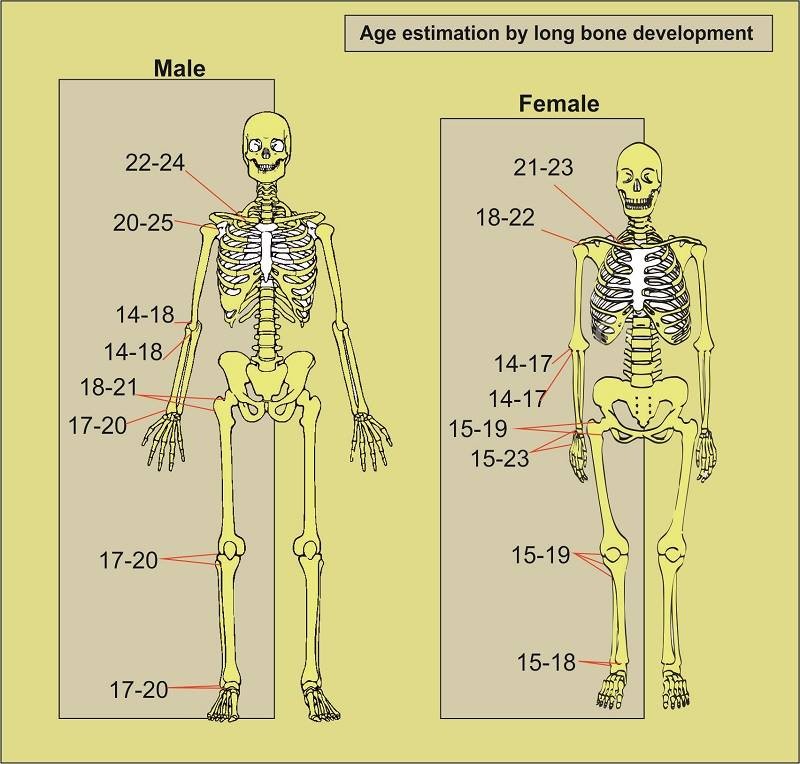Forensic Anthropology Age estimation in juvenile individuals

Forensic Anthropology Age estimation in juvenile individuals
Today we are starting, within our existing series of posts, some dedicated to the methodology of the various disciplines under the remit of the Gibraltar National Museum. We will start this off with a brief note on forensic anthropology.
The estimation of the sex or age of an individual through its skeletal remains is one of the main questions that we face in this kind of analysis. Various analyses are implemented for this: morphological, biometric, degree of ossification, dental eruptions, etc. Sometimes these diagnoses can be well established when a large part of the skeleton is available. Other times, if we are faced with just partial conservation of the remains, a diagnosis must be made from a single feature.
We will now explain some of the characteristics that serve to establish the age of an individual of sub-adult age. It is at this stage in life, before the body is fully developed, when it is easiest to establish age by analysing the state of development of the bones or teeth. With adult individuals this is much more complex, having to resort to dental wear, cranial sutures, specific areas of the pelvis and internal modifications of the femur or fourth rib.
Bones do not form completely nor all at once, but rather form from different points throughout a person’s biological development. Thus we can differentiate two parts of the bones which develop from different points until they fuse into a single bone: the diaphysis or central part of the bones and their epiphysis or extremities.
The joining of these parts of the bones takes place within a certain age range in people, so the analysis of the variants of this type joining can give us a very accurate idea of how old an individual was at the time of death. The different rate of development of men and woman makes them vary significantly.
Published: April 16, 2020
Other similar VM - Forensic Anthropology
18-20 Bomb House Lane
PO Box 939,
Gibraltar
